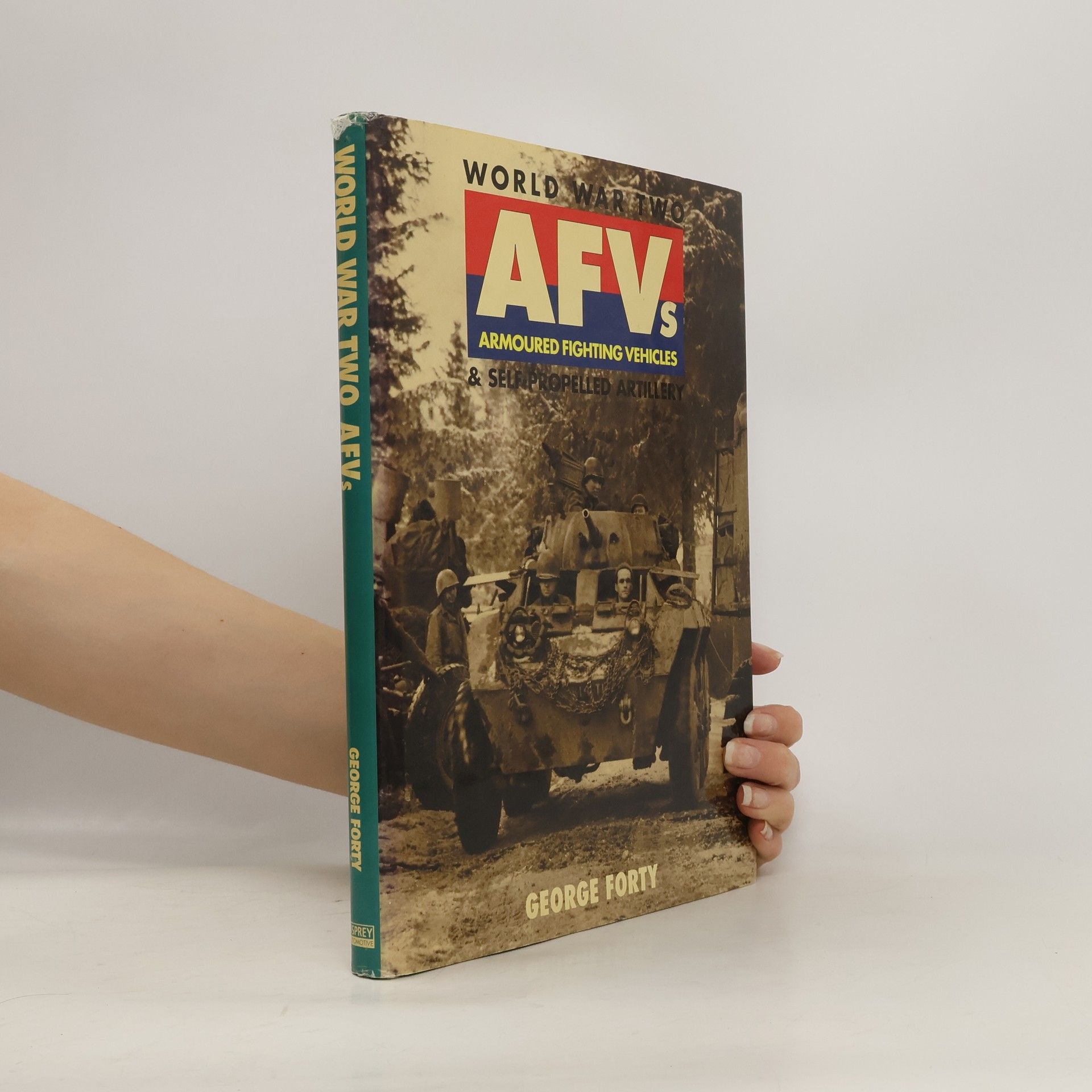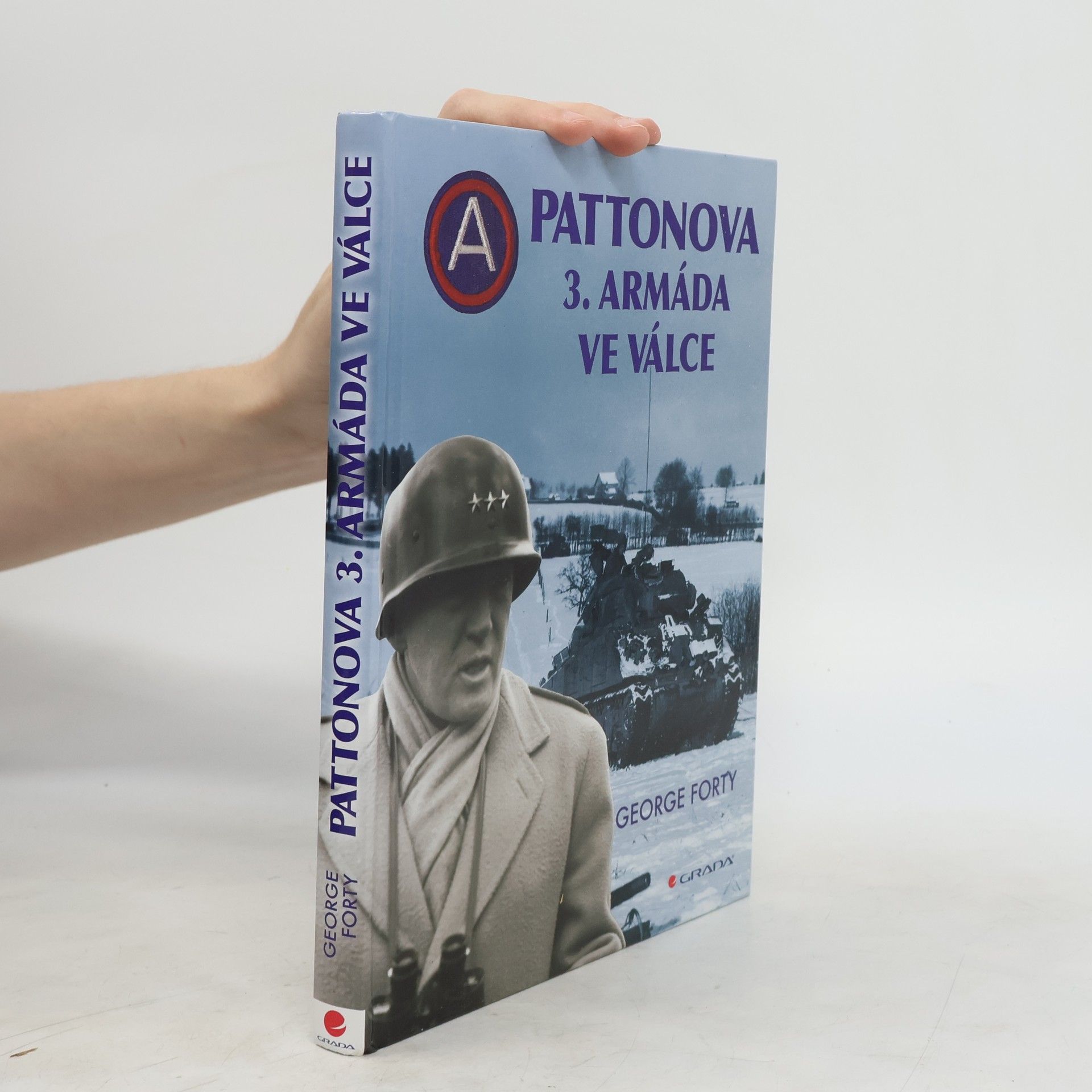This fully-updated book is an authoritative directory of tanks and their immediate derivatives, such as tank destroyers and armoured recovery vehicles, illustrated throughout.
George Forty Book order
A military historian whose work delves into the evolution and impact of armored warfare. His writings are distinguished by a profound understanding of military vehicles and the strategic deployment of armored forces. Readers can expect detailed analyses that illuminate the crucial role of armored technology in shaping historical conflicts.






- 2023
- 2015
Pattonova 3. armáda ve válce
- 224 pages
- 8 hours of reading
Velkolepě zpracovaná historie slavné Pattonovy 3. armády při jejím triumfálním postupu napříč nacisty okupovanou Evropou. Hold vynikajícímu veliteli Georgi S. Pattonovi Jr., jenž zmařil poslední Hitlerovy pokusy zvrátit situaci na západní frontě a svou nezdolnou vůlí zvítězit za každou cenu vtiskl nezapomenutelnou pečeť do událostí posledních měsíců války.
- 2002
The only part of the British Isles that can answer the question 'What was it like to be invaded and occupied in World War 2?’ are the holiday islands of Jersey, Alderney, Guernsey and Sark. Left undefended in 1940, they fell like ripe plums into German hands.Thereafter they were turned into the most heavily defended parts of the Nazi Atlantic Wall, with massive fortifications, gun emplacements and underground storage tunnels. An army of foreign 'slave workers' was brought in as well as the 27,000 German troops (known as the 'Canada Division' as it was widely assumed that they would eventually become POWs!)Amid the routine of occupation came periods of danger and action from raiding parties. After D-Day the German garrison was cut off and 'the Hunger winter' resulted. In May 1945 the Germans surrendered amid much rejoicing.
- 2001
Encyklopedie obsahuje tři hlavní oddíly. Prvním je chronologie, která rok za rokem zachycuje období 1900-1995 následuje. Následuje oddíl A až Z, který se snaží pokud možno jednoduše vysvětlit mnohé události, bitvy, technické vybavení a vojenskou terminologii dané éry. Knihu pak uzavírají specializované charakteristiky, které tuto encyklopedii pravděpodobně odlišují od mnoha ostatních. Jedná se o přehlídku dvanácti největších světových armád 20. století, 160 krátkých biografií některých nejdůležitějších vojenských velitelů století a nakonec 20 příloh nejzajímavějších faktorech, jež se významně podílely na způsobu vedení boje a na jeho změnách. Píše se v nich o zbraních a válčení, o velení a řízení, útočných i podpůrných jednotkách, elitních silách a tak dále.
- 1995
World War Two Armoured Fighting Vehicles
Armoured Fighting Vehicles & Self Propelled Artillery
The Armoured Fighting Vehicle (AFV) played a major role in World War II. The artillery found it necessary to mechanise some of its field pieces. Armoured cars were called upon to carry out tasks in addition to reonnaissance. Tank destroyers were designed to seek, and destroy enemy armour. Add to this fascinating array such oddities as spedy oversnow Aerosans (armoured, fast sledges) deployed by the Red Army, to enormous siege guns weighing over 100 tons, to small remotely controlled and tracked demolition vehicles, only six feet in length, to the massive and powerfully equipped armoured trains deployed by the Soviet Union and Germany.
- 1994
Velitelé tankových vojsk
Rytíři moderní doby
Monografie o taktice a bojových úspěších nejvýznamnějších velitelů tankových vojsk.

